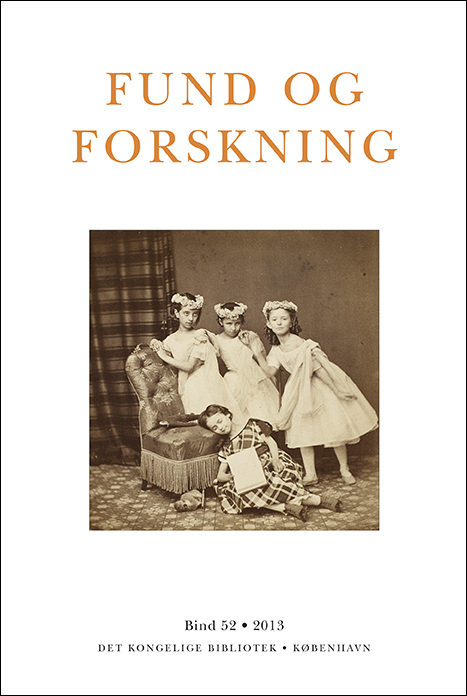Musiklivet på Fuglsang 1892 til 1931
DOI:
https://doi.org/10.7146/fof.v52i0.41297Resumé
In 1891, squire Viggo de Neergaard (1837–1915) from Fuglsang on Lolland and hisyoung wife Bodil (1867–1959), who was the daughter of composer Emil Hartmann
and granddaughter of J.P.E. Hartmann, met the German-Dutch composer, pianist and
conductor Julius Röntgen (1855–1932) and his family on a trip in Norway. When they
parted, they agreed to visit one another in Amsterdam and at Fuglsang respectively.
It was the start of a unique life of music at the manor on Lolland from the Röntgen
family’s first visit the following year and up until Bodil Neergaard’s death as a widow
in 1959. Almost every year up until the outbreak of the First World War in 1914, Julius
Röntgen along with this wife and children, who were all musicians, spent the month of
August at Fuglsang, where he was the driving force in a cornucopia of house concerts.
There was chamber music with a varied program every single evening. Julius Roentgen
planned “the season” as they called it before he left Holland and wrote programs each
year for every single concert. These programs, which cover the years 1893, 1897–1914,
1916, 1923, 1931, 1940, 1944, 1946–1958 and 1978, were recently found among the
surviving papers of presiding judge Fritz Michael Hartmann (1909–2000). In 2012
they were donated to the Royal Danish Library by the Hartmann family. These programs
provide an excellent insight into what was played, and form the basis of this
article that covers the period from 1893 to 1931, which was the last time Julius Röntgen
was at Fuglsang before his death the following year. The music was performed partly
by the Röntgen family and partly by members of the Hartmann family and the other
guests, who came to Fuglsang during the summer. Among these were Carl Nielsen,
who in 1906 performed his string quartet in F-major, opus 19 for the very first time at
Fuglsang. During these years, the program consisted of music by 113 different composers,
music ranging from Baroque and up to what at the time was contemporary
music. Because even though the main emphasis was on music by the classics, especially
Beethoven, 47 of the composers were still alive at the time of performance.
Downloads
Publiceret
2016-12-19
Citation/Eksport
Sørensen, I. (2016). Musiklivet på Fuglsang 1892 til 1931. Fund Og Forskning I Det Kongelige Biblioteks Samlinger, 52, 215. https://doi.org/10.7146/fof.v52i0.41297
Nummer
Sektion
Artikler


